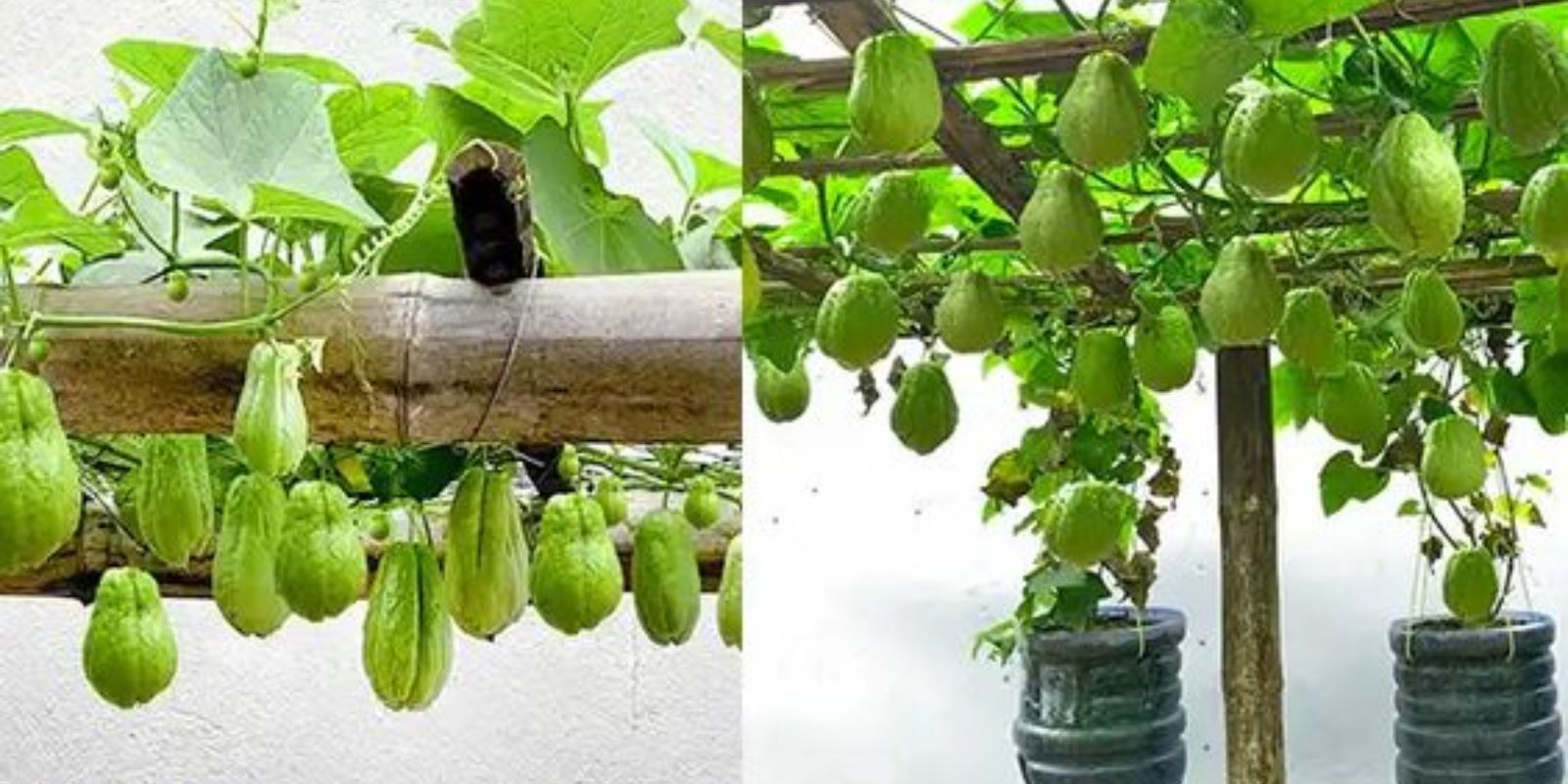Growing chayote at home can seem daunting at first, but it is actually a surprisingly simple task that can yield an abundance of delicious fruits. Also known as vegetable pear or mirliton, chayote is a perennial vine native to tropical regions of Central America. With the right techniques and a bit of care, you can transform your garden into a small chayote paradise. This article will guide you through the steps to successfully grow chayote at home and share tips to maximize your harvest.
Introduction to Growing Chayote
Chayote (Sechium edule) is a member of the gourd family, similar to squash, cucumbers, and melons. The fruit, rich in vitamins and minerals, is valued for its crunchy texture and mild flavor. In addition to being nutritious, chayote is also highly versatile in the kitchen, suitable for raw, cooked, sautéed, or mashed preparations.
Benefits of Growing Chayote at Home
- Abundance: A single chayote plant can produce an impressive quantity of fruits, providing you with regular harvests throughout the season.
- Simplicity: Chayote is a hardy plant that requires minimal care once established.
- Nourishing: Chayote is an excellent source of fiber, vitamins C and B9, and minerals like potassium.
- Economical: Growing your own chayote can reduce your food costs and provide you with fresh fruits anytime.
Step-by-Step Guide to Growing Chayote
Step 1: Select a Healthy Chayote
The first step in growing chayote is choosing a healthy fruit. Visit a local market or grocery store to select a mature chayote with smooth, unblemished skin. Ensure there are no signs of rot or damage.
Step 2: Sprout the Chayote
Place the chayote in a warm, sunny spot until it begins to sprout. You will notice a small shoot emerging from the top of the fruit after a few weeks. This step is crucial for ensuring the plant’s healthy growth.
Step 3: Prepare the Soil
Chayote prefers well-draining soil rich in organic matter. Choose a spot in your garden that receives plenty of direct sunlight, at least 6 to 8 hours per day. Amend the soil with compost to improve its fertility and structure.
Step 4: Plant the Sprouted Chayote
Dig a hole large enough to accommodate the sprouted chayote. Bury the fruit so that the sprout is pointing upwards, leaving the top of the fruit slightly exposed above the soil. This allows the roots to spread properly and the plant to grow vigorously.
Step 5: Provide Support
Chayote is a climbing plant that needs support to grow correctly. Install a trellis, netting, or other vertical support near the plant for it to climb. This also improves air circulation around the leaves and fruits, reducing the risk of disease.
Step 6: Water Regularly
Keep the soil consistently moist but not waterlogged. Water the plant regularly, especially during dry periods. A good drip irrigation system can be helpful in maintaining optimal moisture levels.
Step 7: Fertilize
To encourage vigorous growth and abundant fruit production, fertilize the plant with a balanced fertilizer every two to three months. You can use organic or chemical fertilizers, depending on your preference. Follow the manufacturer’s instructions to avoid over-fertilization.
Step 8: Harvest
Chayote typically starts producing fruits about 4 to 6 months after planting. The fruits should be harvested when they are still young and tender, before they become too large and fibrous. To harvest, gently twist the fruit until it detaches from the stem.
Additional Tips for Successful Chayote Cultivation
- Crop Rotation: To avoid soil depletion and disease spread, practice crop rotation. Do not replant chayote in the same spot each year.
- Cold Protection: Chayote is sensitive to frost. If you live in a region with cold winters, plant the chayote in a large pot that you can move indoors during the colder months.
- Pest Control: Regularly monitor your plant for signs of pests such as aphids and mites. Use organic solutions or mild insecticides to control them.
Troubleshooting Common Problems
Root Rot
- Cause: Overwatering or poorly draining soil.
- Solution: Ensure the soil is well-draining and avoid overwatering. Use a pot with drainage holes if growing in a container.
Slow Growth
- Cause: Lack of sunlight or nutrients.
- Solution: Ensure the plant receives sufficient sunlight and fertilize regularly.
Yellowing Leaves
- Cause: Nutrient deficiencies or excess water.
- Solution: Check the soil and adjust watering and fertilization accordingly.
Conclusion
Growing chayote at home is a rewarding and accessible experience for gardeners of all levels. With a bit of care and attention, you can enjoy an abundant harvest of this versatile and delicious fruit. Follow these simple steps to start your own chayote plantation and transform your space into a haven of fresh, nutritious fruits.
Motivation:
Try growing your own chayote and savor the joy of harvesting fresh fruits directly from your garden! Share your experiences and tips with the community to inspire other gardeners to embark on this fascinating adventure. Happy gardening!

